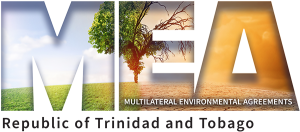
Climate Change
Climate Change Homepage
What is the issue?
The Earth’s climate is changing at an unprecedented rate, with average temperatures on the rise. Scientists have been monitoring this trend since the late 1800s. However, the most rapid warming has occurred within recent decades. Most of this recent warming has been linked to human activities that release certain greenhouse gases (e.g. water vapour; carbon dioxide CO2; methane CH4; nitrous oxide N2O; hydrofluorocarbons HFCs; perfluorocarbons PFCs and sulphur hexafluoride SF6). These activities include the burning of fossil fuels such as coal and gasoline for power generation and deforestation.
How is the problem being addressed?
In 1992, countries joined an international treaty, the UNFCCC, which represents the international policy response to the challenge of global climate change arising from the increase in anthropogenic (man-made) greenhouse gas emissions into the atmosphere. Trinidad and Tobago ratified the UNFCCC in May 1994 and the Paris Agreement in February 2018, respectively.
The objective of the UNFCCC is to stabilise the concentrations of greenhouse gases in the atmosphere at levels that prevent dangerous interference with the world’s climate. This must be done within a time frame that will allow ecosystems to adapt naturally to climate change so that food production is not threatened and sustainable economic development is not hindered.
The Convention places the greatest burden for fighting climate change on developed countries, since they are the source of most past and current greenhouse gas emissions. Therefore, different obligations have been set for developed and developing countries with the same objective in mind. In 2011, Parties launched a new negotiating process to strengthen the treaty’s multilateral, rules-based regime.
The Paris Agreement aims to hold the increase in the global average temperature to well below 2 °C above pre-industrial levels and pursuing efforts to limit the temperature increase to 1.5 °C above pre-industrial levels, recognizing that this would significantly reduce the risks and impacts of climate change; (b) Increase the ability to adapt to the adverse impacts of climate change and foster climate resilience and low greenhouse gas emissions development, in a manner that does not threaten food production; and (c) Make finance flows consistent with a pathway towards low greenhouse gas emissions and climate-resilient development.
What needs to be done locally?
UNFCCC
- Develop National Inventory of Greenhouse Gas emissions (completed)
- Develop a Programme of action containing measures to mitigate the effects of climate change (completed and constantly being updated to reflect changes in technology and understanding)
- Promote and cooperate in the development, application and diffusion of technologies (ongoing)
- Promote sustainable management (ongoing)
- Cooperate in preparing for adaptation to the impacts of climate change (ongoing)
- Employ appropriate methods to minimize adverse effects (ongoing)
- Promote and cooperate in scientific, technological, technical, socio-economic and other research (ongoing)
- Promote and cooperate in the full, open and prompt exchange of relevant scientific, technological, technical, socio-economic and legal information (ongoing)
- Promote and cooperate in education, training and public awareness (ongoing)
Paris Agreement
- Submission of targets for the reduction of greenhouse gas emissions known As Nationally Determined Contributions (NDCs); (completed)
- Develop Biennial Transparency Reports i.e. two-year update on greenhouse gas inventories which can include information on adaptation and loss and damage; (completed)
- Compliance with an Enhance Transparency Framework, i.e. monitor, report and verify emissions, emissions reduced and support received. (ongoing)
- Develop reports on adaptation needs, priorities and actions undertaken. (ongoing)
For more information regarding the United Nations Convention on Climate Change, please visit: www.unfccc.int
